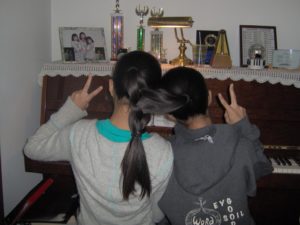Soul Mates or Cell Mates?
 Healthy adult twins do not feel imprisoned by their twinship. They have acknowledged each other’s right to be separate and unique while maintaining their special connection. They have worked through feelings of ambivalence, competition, and jealousy, and each has evolved into an individuated self. Healthy twins care deeply about one another and recognize and respect each other’s autonomy and choices. They enjoy being together but do not require exclusive possession of one other in order to cope with life or other relationships.
Healthy adult twins do not feel imprisoned by their twinship. They have acknowledged each other’s right to be separate and unique while maintaining their special connection. They have worked through feelings of ambivalence, competition, and jealousy, and each has evolved into an individuated self. Healthy twins care deeply about one another and recognize and respect each other’s autonomy and choices. They enjoy being together but do not require exclusive possession of one other in order to cope with life or other relationships.
Some of my adult twin consultations focus on the difficulties that a number of adult twins encounter when one of the twins is moving in a developmental direction to be on his or her own while the other one is not. It is helpful to think about these troublesome adult twin transitions as codependent issues. Since numerous twin pairs have been emotionally reliant on one another for many years, they unwittingly develop an unhealthy dependence upon one another. Very few people question this codependency because twins are expected to experience an extraordinary closeness.
In my book entitled The Same but Different, I address this issue of divergent twin agendas. For example, if one twin sister seeks a relationship outside of the twinship, both twins may experience difficulty coping with the new attachment. The twin in the new relationship feels guilty and selfish for “replacing” her sister, and the “abandoned” twin feels angry, resentful, and disappointed that she is no longer the first priority in her sister’s life. These circumstances contribute to tremendous conflict, misunderstandings, and anguish for all concerned. The fact that so many twins and their families are not aware of these dynamics makes these inevitable consequences even more daunting.
Certain tips and suggestions may help to ameliorate the emotional tensions that bubble up when codependent behavior patterns are disrupted. First, one has to recognize and admit that he or she is an enabler. An enabler helps people who are capable of doing things on their own. An enabler is the antithesis of a helper, who helps people do what they cannot do on their own. For example, twins often feel obligated to include their twin in their dating life because their sister or brother is alone, jealous, and depressed. The content twin is emotionally conflicted about how to manage the connection and the separateness. How do twins nurture their new relationship and simultaneously sustain their loyalty and availability to their twin?
It requires tremendous patience and perseverance to tolerate painful or anxiety-provoking situations with one’s twin that cannot be fixed. Twins have to be especially vigilant about not taking responsibility for their sibling’s actions and about not being seduced back into the old relationship by feelings of guilt or selfishness. They must be consistent with newly drawn boundaries in terms of personal time and responsibilities.
Twins should reframe their mind-set to reflect the feeling that they want to be around their twin rather than they need their twin around. There is an essential difference between missing one’s twin and needing him or her. Twins must recognize that both need to develop new behaviors so that they can alleviate the turmoil between them and nurture respectful attitudes about the new attachments in both of their lives. The process is similar to the progressive changes that children need to acclimate to following a separation, divorce, or second marriage. It requires time and acceptance, and it opens up the possibilities for newly created, healthy lifelong twin intimacy.
Have you found it challenging to bring new relationships into your twinship?
Image courtesy of Joseph Li (CC BY-SA 2.0)

